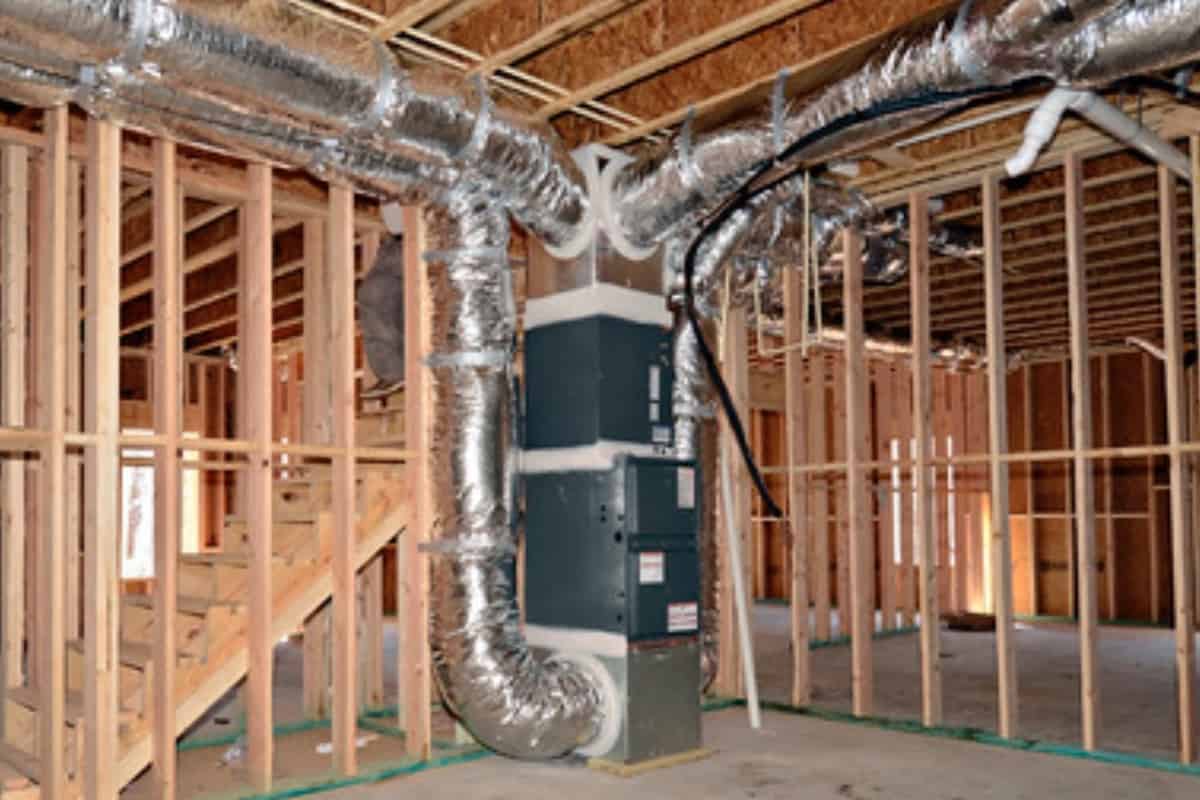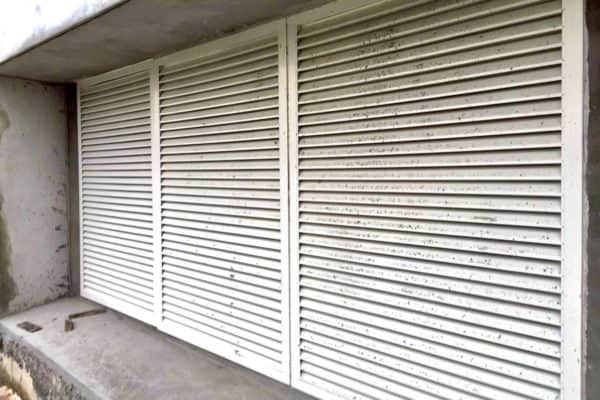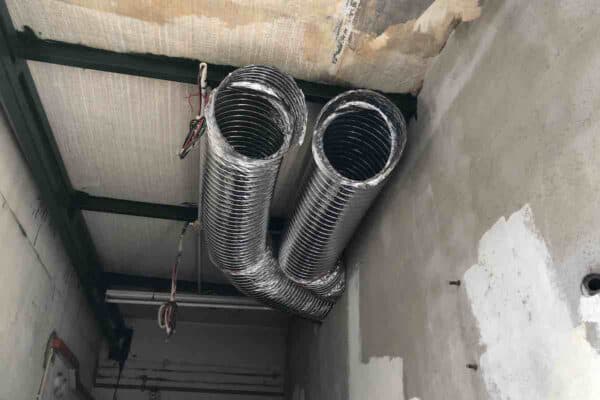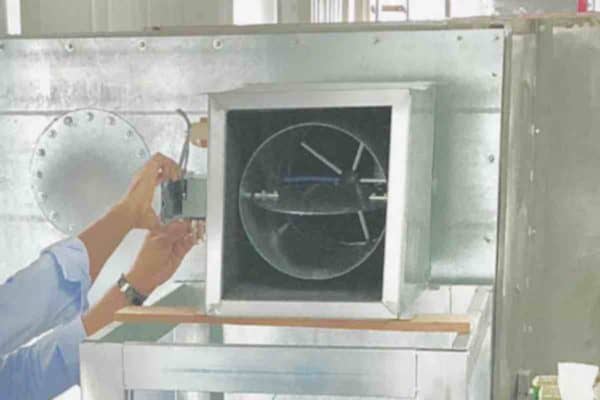Ducted Air Conditioning: All the Things You Want to Know
Ducting air conditioning system is relatively more complex HVAC system and thus, we often want to know about how it works, what are the types, cost and etc. before we decide if we want it.
Firstly, what is ducted air conditioning? Ducted air conditioning is referring to having rigid metal ducts, flexible ducts, diffusers, grilles and other ductwork to distribute the air from an air conditioner to a living space.
Conversely, ductless air conditioning (ductless system), as the name suggests, is meaning the air conditioner does not require any ductwork. One of the examples is ductless mini-split air conditioners.
A ducted air conditioning system is more complex than ductless because it involved more things. Getting to know an overview of the system can help us to make a better decision.
Why Use a Ducted Air Conditioning System?
In residential buildings, people often use ducted air conditioning systems for a better interior aesthetic. All diffusers and grilles are “hidden” as they flush with the ceiling or floor. So, it gives a nice and clean look.
Besides, a ducted system can cool and heat the whole home with a centralized air handler as the duct can be extended to different rooms.
In commercial buildings, while some are chasing for better aesthetics, more often is because of the high cooling power needed in these buildings. If these buildings are installed with ductless air conditioners, it will have too many air conditioners to maintain and thus, higher maintenance costs.
Most of the time, ducted air conditioners are inevitable when the cooling requirement is beyond the limit of ductless air conditioners. For instance, most ductless mini splits are maxed at 24,000 BTU of cooling capacity.
Hence, commercial buildings have no choice but to use ducted air conditioners.
Besides, ducted air conditioning systems offer more versatility. It can work together with a fresh air system, heat recovery system, have better filters and equip with UV lamps to kill bacteria and improve indoor air quality.
How Ducted Air Conditioning System Works?
Ducted air conditioners are often called central air conditioners or just air handlers because most central air conditioners are ducted. In a central air conditioning system, the central air conditioner is usually located at a dedicated place such as the attic, roof, basement, and mechanical room.
Because the air handler is powerful and noisy, it needs to be far away from the crowd.

A ducted air conditioning system starts with the air conditioner itself. Then, a rigid duct connects the supply outlet of the air conditioner before branching into several smaller rigid ducts.
Next, these branch rigid ducts go into each room and one or more flexible ducts pop out from the rigid duct and connect to the diffusers.
When it comes to returning air back to the air conditioner, the air in each room goes through one or more return air grilles/vents. The return air travels back to the air conditioner through return flexible ducts and rigid ducts.
Sometimes, flexible ducts are not required for return air as the space above the ceiling can serve as a plenum box and the return air just goes right into the rigid duct.
What are the Things Involved in a Ducted Air Conditioning System?
A ducted air conditioning system has many components which work together to deliver the cooling. Some of the components of a ducted air conditioning system are as follow:
1. Ducted Air Conditioner
Common ducted air conditioners such as fan coil units and air handling units are designed to distribute air through ductwork. Ducted air conditioners generally have higher fan static to push the supply air through the ductwork into the rooms.
2. Rigid Duct
Apart from the air conditioner itself, the rigid ducts is the largest component in a ducted air conditioning system. The rigid duct is usually made of galvanized iron at about 0.5mm to 1.0mm thickness depending on the duct size. The entire rigid duct must be insulated to prevent condensation.
3. Insulation
Insulation may not be the most expensive component but it is one of the most important components because it greatly affects the efficiency (SEER) of a ducted air conditioning system.
Cold air traveling inside the duct will quickly lose its coldness to the surroundings if there is no insulation. Without insulations, by the time the cold air reaches the supply air diffuser, it is warm already.
4. Flexible Duct
A flexible duct is an insulated round duct that is soft and bendable. It is very useful on the final connection between the rigid duct and the supply air diffusers, return air grilles or vents. Sometimes, flexible ducts are not necessary for a ducted air conditioning system.
The main purpose of using flexible ducts is to have the flexibility to adjust the diffusers/grilles/vents’ position.
5. Diffuser and Grille or Vent
Cold air comes out from supply air diffusers. Warm air returns back to the air conditioner via return air grilles or vents (registers). Usually, diffusers have adjustable blades for us to direct the airflow at will.
As for the return air grilles or vents, their blades are mostly fixed.
For high ceilings, a special type of diffuser called the jet diffuser can be used to provide adequate air distribution.
6. Damper
Dampers can be installed between ducts, right before diffusers and some other locations in a ducted air conditioning system. The objective of dampers is to allow us to control the airflow as necessary.
In a ducted air conditioning system, dampers are important to have because we need to ensure all the supply and return air are balanced so that we won’t have one room colder than the other rooms.
7. Air Filter
Generally, ducted air conditioners have better air filter than ductless air conditioners. Most ducted air conditioners have built-in air filters. In addition, the filter of ducted air conditioners can be upgraded to very high-grade filters such as pocket filters and HEPA filters.
Thus, greatly improving the indoor air quality. Clean air is also one of the selling points of ducting air conditioning systems.
8. Support Accessories
With all the ducts and grilles, supporting accessories such as thin metal wires, flat bars, insulation glues and duct collars are needed to piece all the components together for a complete ducted air conditioning system.
What are the Options of Ducted Air Conditioning System?
There are many types of air conditioning systems available in the market. However, most of them can be coupled with ducted type indoor units to distribute air through ductwork.
a) Ducted Single Split

If you use a ducted single split system, you’ll have one condenser outside your house and one ducted air conditioner inside your house. For a typical house, you may opt for one unit of ducted type indoor air conditioner to provide cooling/heating for the entire house.
Alternatively, you can use 2-3 smaller units for different zones in your house. If you use 3 smaller ducted units for your house, you will have 3 units of condenser to put outside your house. However, the benefit of having 3 smaller ducted units is you can control the room temperature for different zones.
b) Ducted Multi-Split

If you use a ducted multi-split system, you’ll have one condenser outside your house and more than one ducted air conditioner inside your house.
Usually, for a large house, you may want to have 3-4 units of ducted air conditioner so that you can control the room temperature for different zones. With 3 ducted air conditioners, you will have 3 thermostats and thus, you can set the desired temperature for each room.
Even though the multi split system only has one condenser, it is often more expensive than the single split system. But, it can save you some valuable space with just one condenser.
c) Ducted VRF System

Similar to the multi-split system, if you use a ducted VRF system, you’ll have one condenser outside your house and you can choose to have multiple ducted air conditioners inside your house.
VRF system is more powerful than both the single split and multi-split systems. VRF system has lesser copper pipes between the condenser and the ducted air conditioner when compared to the multi-split system.
Typically, the VRF system has significantly more features than the other two systems. Some of the features are a central display controller, scheduling and individual temperature control.
d) Ducted Packaged System
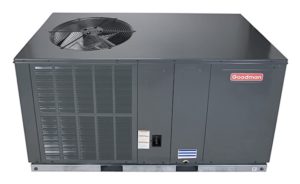
A packaged ducted air conditioning system has only a single unit of air conditioner that can be located either on the roof or outside the house. It is a compact unit that combined both indoor and outdoor units into one single unit. Packaged air conditioners are best for houses with limited space.
What Affects the Cost of a Ducted Air Conditioning System?
Ducted air conditioning is overall more expensive than ductless units. The total cost of ducted air conditioning is affected by the following factors:
i) Different air conditioning system cost differently
Usually, the packaged ducted air conditioning system is the most affordable one. Next is the ducted split air conditioning system which has complex refrigerant pipework between its indoor and outdoor unit. Furthermore, if you opt for multiple indoor units, it gets even more expensive.
Then, it comes the ducted multi-split air conditioning system. Though it is similar to the split system with multiple indoor units, the multi-split system has more features and controls. Thus, it is often more expensive than the split system.
Finally, the ducted VRF air conditioning system is more of a luxury type of system with all the bells and whistles. Not only that, its refrigerant pipework is even more complex than both the split and multi split system.
Thus, with a central display controller, the VRF system is the most expensive one among the 4 types of air conditioning systems.
ii) More expensive if more ducts, diffusers and grilles are needed
Often, the cost of ductwork is calculated by how many dollars per square foot. If the ductwork has many bends and very long, it is more expensive. Furthermore, with the increase of duct area, the cost of insulation also increased.
Next, if you need many supply air diffusers due to you want to have a better air distribution or you have many rooms, the overall cost of the ductwork also will increase. More diffusers mean longer rigid ducts and more flexible ducts alongside more support accessories.
Some people may opt for a fully flexible duct system which means that they don’t have any rigid duct. Though it can save money, the installation must be well-done, or else, the system will perform poorly and consume more power.
iii) Bigger house need more cooling capacity and cost more
It’s not hard to understand that the more cooling capacity your house needs, the more expensive the air conditioning system gets. Not only higher capacity air conditioners cost more, but they also required a bigger duct size and hence, more duct area which results in more cost.
iv) Contractors charge more for complex installation
If your house is difficult for the HVAC contractors to install the ducted air conditioning system, the contractors will charge more for the installation. Besides, if your house has many obstructions that result in many duct bends, the overall cost also increased.
v) Optional features cost extra
A ducted air conditioning system can have many features for you to choose from. For example, the ducted air conditioner may have a wired controller by default. If you want to have a remote controller, you’ll need to pay extra.
Although these features are optional, you may want one or two attractive features which you’ll end up paying more.
vi) Additional cost for electrical upgrades if necessary
Some houses, especially old houses, don’t have sufficient or suitable electrical supply ready for your new ducted air conditioning system. Thus, you’ll need to upgrade all the cables, breakers and other electrical components in order to ensure your new air conditioning system is able to operate safely.
vii) Replacement of existing system may cost more
Replacing the entire existing system (including ductwork) costs more than just installing a new system. HVAC contractors need to do extra work to remove the existing system first before putting in a new one. Thus, they’ll charge for that.
However, you may not need to replace the existing ductwork. Try your best to use back the existing ductwork. But, you may need to touch up or make good some of the ducts.
Best to have a HVAC contractor do a full assessment to see which components can use back and which of them need to be replaced.
What’s the Benefits of a Ducted Air Conditioning System?
Although a ducted air conditioning system is more complex and expensive, it offers great benefits over other systems. Furthermore, some of the advantages are available only in a ducted air conditioning system.
1) One ductwork for both cooling and heating
The furnace is a centralized heating system and thus, it requires ductwork to distribute warm air. A ducted air conditioner can use the same ductwork to distribute cold air.
So, if a furnace is required over electric space heaters and heat pumps, a ducted air conditioner and furnace combo is a cost effective solution.
2) Centralized monitor and control
A ducted air conditioning system by default is a centralized air conditioning system unless you opt for multiple smaller capacity ducted units. Thus, you’ll have one display controller for you to switch on/off, set temperature, schedules and others for your entire house.
3) Elegant diffusers and grilles make a better interior aesthetic
Diffusers, grilles or vents of a ducted air conditioning system are “hidden” or flush with the ceiling or floor. Thus, it gives a more premium/luxury feel to your house. Instead of having visible air conditioners in your house, the ducted air conditioning system gives a nice clean look to your interior.
4) Improved indoor air quality with high grade filters
Many ducted air conditioners allow their filters to be upgraded to higher grade filters such as pocket filters and HEPA filters. For people who have a sensitive nose, asthma or allergy, high grade filters may be able to improve their quality of living.
Other systems such as ductless mini split are not capable of having such a high grade filter.
Why You Don’t Need a Ducted Air Conditioning System?
Some HVAC contractors may promote their ducted air conditioning system as if it is the best solution for you. However, there are times where you don’t have to pay so much for an air conditioning system.
A) Your house doesn’t need a furnace
If your house doesn’t get too cold, you may not need to use a furnace. Nowadays, many houses use a heat pump system to provide both cooling and heating. Though indoor units of heat pump system can be ducted, more often they are ductless wall-mounted type.
So, you may use 4-5 units of ductless mini split heat pumps instead of a ducted air conditioner.
B) You prefer to control the room temperature for each room
Because the ducted air conditioner is centralized, you can’t control the room temperature for each room unless you pay more for multiple ducted units or additional components for individual temperature control. Thus, you may want to use an individual ductless air conditioner in every room.
C) Your house doesn’t have an existing ductwork
Some people may compare the cost similarity between a ducted air conditioner and a ductless air conditioner. However, it is assumed that you have existing ductwork and only need to purchase a ducted air conditioner.
Sometimes, people may misinterpret that the cost of a ducted air conditioning system is only slightly more than a ductless air conditioning system which is not true. If the existing space doesn’t have existing ductwork, it is very expensive to install a ducted air conditioning system.
What is the Lifespan of a Ducted Air Conditioning System?
On average, a ducted air conditioning system lasts about 10-15 years before a major replacement is needed. The compressor of the ducted air conditioner, which is the most expensive part, often has 5 years warranty for 2.5HP and below.
Rigid ducts, diffusers and grilles or vents usually last about 10-15 years also. However, flexible ducts typically have a shorter lifespan as they are more fragile. Insulations of a ducted air conditioning system can be easily damaged and thus, they don’t last as long as rigid ducts but repairing them is cheap and easy.
How is the Maintenance of a Ducted Air Conditioning System?
All air conditioning systems need regular service to maintain performance and reliability. However, a ducted air conditioning system has a longer checklist when it comes to maintenance.
Filter Replacement
While a ductless mini split air conditioner has a washable plastic mesh filter that you can use over and over again, a ducted air conditioner usually has a limit to its washable cotton filter. Some manufacturers recommended replacing a new filter when washed 3 times.
In the case of pocket filters or HEPA filters, you need to replace them since they are not washable.
Coil Cleaning Work
Like other air conditioners, you need to clean the evaporator and condenser coil once a year depending on the condition despite you already clean the air filter regularly. The filter can only block a certain size of the particle, smaller particles will sip in and stuck on the coil.
Duct Cleaning Work
After about two to five years, ducts collected a significant amount of duct which can slow down the airflow, grow mold and bacteria inside the duct. Therefore, you may need to call a professional to do duct cleaning work.
However, if you promptly clean the air filter and coils, it takes longer for the dust to build up inside the duct.
Air Balancing Work
Although it is seldom, you may need to do air balancing work for the ducted air conditioning system if you start to feel some rooms are colder than other rooms. Wind and vibration can loosen the damper, causing unbalanced airflow distribution.
How to Choose a Ducted Air Conditioning System?
Unlike other types of air conditioner, choosing a ducted air conditioner need to consider multiple factors such as compatibility and suitability. It may vary from one home to another.
Therefore, the best way to choose a ducted air conditioner is to inform HVAC contractors of your preferred brand, have them assess your house and compare their price and recommendation.
As a general rule, you should use a reputable brand that is available in your area so that parts are available and affordable. Some of the reputable brands are as follow:
- Daikin
- Trane
- Mitsubishi
- Carrier
- Panasonic
Furthermore, it is important that you pick reputable HVAC contractors for ducted air conditioning work. A well-done and poorly done ducted system can have significant differences in performance and energy usage.
If you have anything to add (or ask) about this topic, leave a comment down below!


